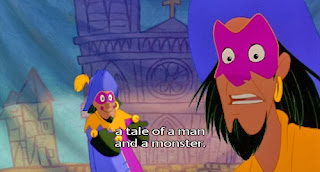Disney is
everywhere. It has become a juggernaut of media and commercial culture not only in the United
States, but around the world. Kevin Shortsleeve’s essay “The Wonderful World of the Depression:
Disney, Despotism, and the 1930s. Or, Why Disney Scares Us” describes the
Disney Company as a force to be reckoned with, often referred to as “the evil
empire.” Shortsleeve goes as far to say, “Many critics appear frightened
of Disney on some level” (1).
“Achieving
and maintaining great commercial success via an Orwellian-style management,
while selling utopian dreams of agrarian, monarchical kingdoms in its films,
has impressed, entertained, and subliminally frightened audiences for nearly
seventy years. In an attempt to divert attention away from its totalitarian
tendencies, Disney has overcompensated with maudlin and insincere “freedom” and
“democracy” attractions. It is this “fractured experience” that specifically
haunts us. Orwell and Jefferson do not dance well together” (Shortsleeve 5).
Looking
at it this way, it becomes frightening how many people are in love with Disney.
It may be that Walt wanted to create a perfect utopia of happiness and fun, a
dream come true. However, it also could be that he was a maniacal genius who
understood that a company engrained in someone’s childhood memories would
invest itself in that person forever and ever….
Frightening,
but genius.
And even
with this knowledge, I still love Disney with all my heart.
Don’t
you?










